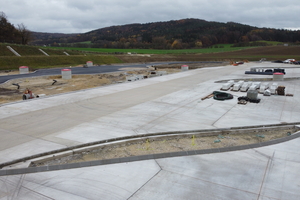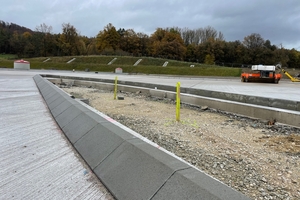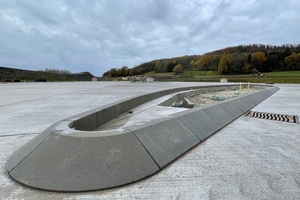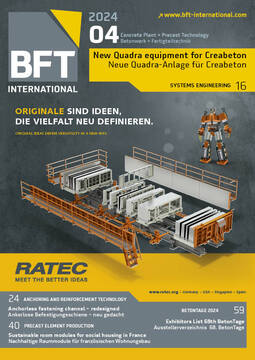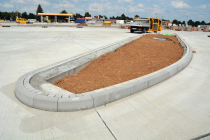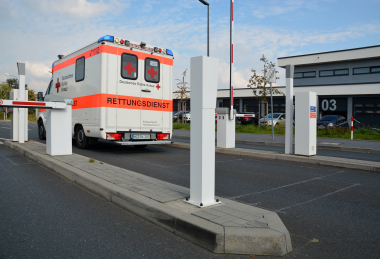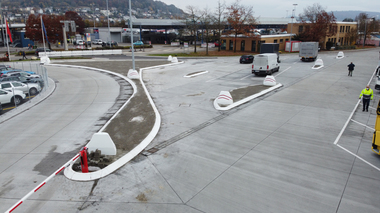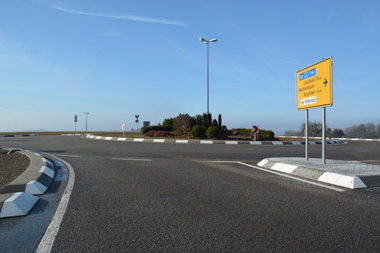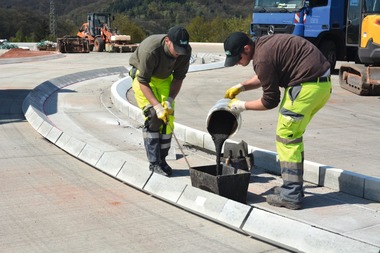Adhesive bonding technique for the curbstones at two parking and rest-stop facilities
Increasing traffic volume on the A3 motorway between Nuremberg and Regensburg/Germany, especially truck traffic, has increased the demand for parking spaces at motorway parking and rest-stop facilities for many years. Especially at night, excess occupation has frequently led to dangerous traffic situations in the existing facilities. In addition, there is a lack of sanitary facilities.
For this reason, the German Federal company Autobahn GmbH, in an effort to improve the situation, built two non-serviced parking and rest-stop facilities with toilet buildings in the winter of 2023-2024 on the A3 motorway between the access points Oberölsbach and Neumarkt-Ost. In order to keep construction time as short as possible, new traffic islands were installed, based on a special adhesive-bonding construction process.
Glued-on islands have advantages
New construction of the parking/toilet facilities at Berg and Pilsach created approx. 80 new parking spaces for trucks, including other amenities. The four newly installed traffic islands are an important design element of the new parking facilities. The traffic islands provide spatial separation and improve the truck drivers’ quality of stay. Toward this benefit, curbstones play a special role.
Adhesive bonding technique for curbstones from Betonwerk H. Meudt
irgit Gey of the construction company Josef Rädlinger Bauunternehmen GmbH in Cham, Germany, explained why: “When building new traffic areas, the edge restraints are built first and the roadways and sidewalks paved, asphalted or concreted afterwards. But for this construction measure, the parking places for trucks were erected with concrete of high compressive strength. For this reason, it would have been very complicated to cast the concrete painstakingly around all the traffic islands. Concrete finishers used for paving such areas, due to their fixed operating width, often have difficulties in precisely filling the spaces up to the curbstones – especially if, as was the case here, tight radii are involved.”
Here, FB 30 x 25 flat curbstones and the adhesive bonding technique from the concrete block manufacturer Hermann Meudt from Wallmerod in Germany were used. All of the curbstones installed here as edge restraints were previously cut in the plant to a height of 16 cm and glued onto the completed concrete pavement, instead of installing them in a conventional way. Gluing took place by the thin-bed process. Thanks to the numerous radii and formed blocks available from the company, as well as elaborate planning, the traffic islands could be realized quickly and without problem.
Clean and efficient processing
“The entire installation process is definitely cleaner and more efficient than by the conventional construction method,” explains Birgit Gey. “This enabled highly professional implementation and sped up the construction process. We could also eliminate the numerous joints as, for example, would have been required with the conventional construction method with granite curbstones, since cracking is eliminated with the solution chosen by us.”
Another great advantage of the adhesion technique is that the flat curbstones were sawed off to precisely the same height. In this way, production-related fluctuations in height are eliminated and the blocks are, so to speak, calibrated for gluing, virtually excluding dimensional-tolerance issues.
CONTACT
Hermann Meudt
Betonsteinwerk GmbH
Frankfurter Straße 38
56414 Wallmerod/Germany
+49 6435 50920

